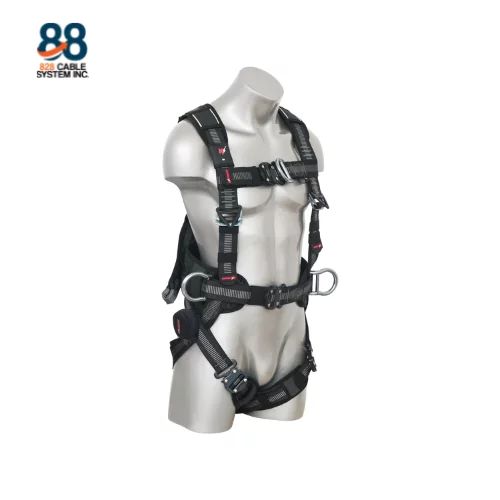In today’s industrial and construction environments, safety is paramount. Among the most critical aspects of workplace safety is fall protection. Falls from heights are a leading cause of serious injuries and fatalities in various industries. That’s where full-body harnesses come into play. This comprehensive guide aims to shed light on the importance, selection, proper use, and maintenance of full-body harnesses to ensure maximum safety for workers at elevated heights.
Understanding Full-Body Harnesses:
Full-body harnesses are more than just safety equipment; they’re lifelines for workers at height. Unlike traditional body belts, which were prone to causing internal injuries during falls, modern full-body harnesses are designed to distribute the impact of a fall across the body, reducing the risk of injury. Key components include straps, buckles, D-rings for attachment, and padding for comfort during prolonged wear.
Regulations and Standards:
To ensure workplace safety, regulatory bodies such as ANSI and OSHA have established standards for fall protection equipment. These standards dictate criteria for fall arrest devices, including requirements for deceleration distance, maximum arresting force, and load capacity. Compliance with these standards is essential to protect workers and avoid legal repercussions.
Choosing the Right Harness:
Selecting the appropriate full-body harness depends on various factors, including the specific hazards present in the workplace, the tasks to be performed, and the comfort and mobility requirements of the wearer. Proper sizing and fit are crucial to ensure that the harness functions effectively in the event of a fall. Additionally, specialized harnesses are available for unique work environments, such as confined spaces or extreme temperatures.
Proper Use and Maintenance:
Even the most advanced harness is only effective if used and maintained correctly. Thorough training on harness fitting, adjustment, and inspection is essential for all workers who may be exposed to fall hazards. Regular inspections, following a comprehensive checklist, help identify wear and tear, damage, or other issues that may compromise the harness’s integrity. Routine maintenance, including cleaning and storage, prolongs the lifespan of the harness and ensures its reliability when needed.
Takeaway
Full-body harnesses are indispensable tools in the fight against falls from height. By understanding the principles behind their design, complying with regulations, selecting the right harness for the job, and prioritizing proper use and maintenance, employers can significantly reduce the risk of workplace injuries and fatalities. Remember, safety is everyone’s responsibility, and investing in fall protection is an investment in the well-being of workers and the success of businesses.











